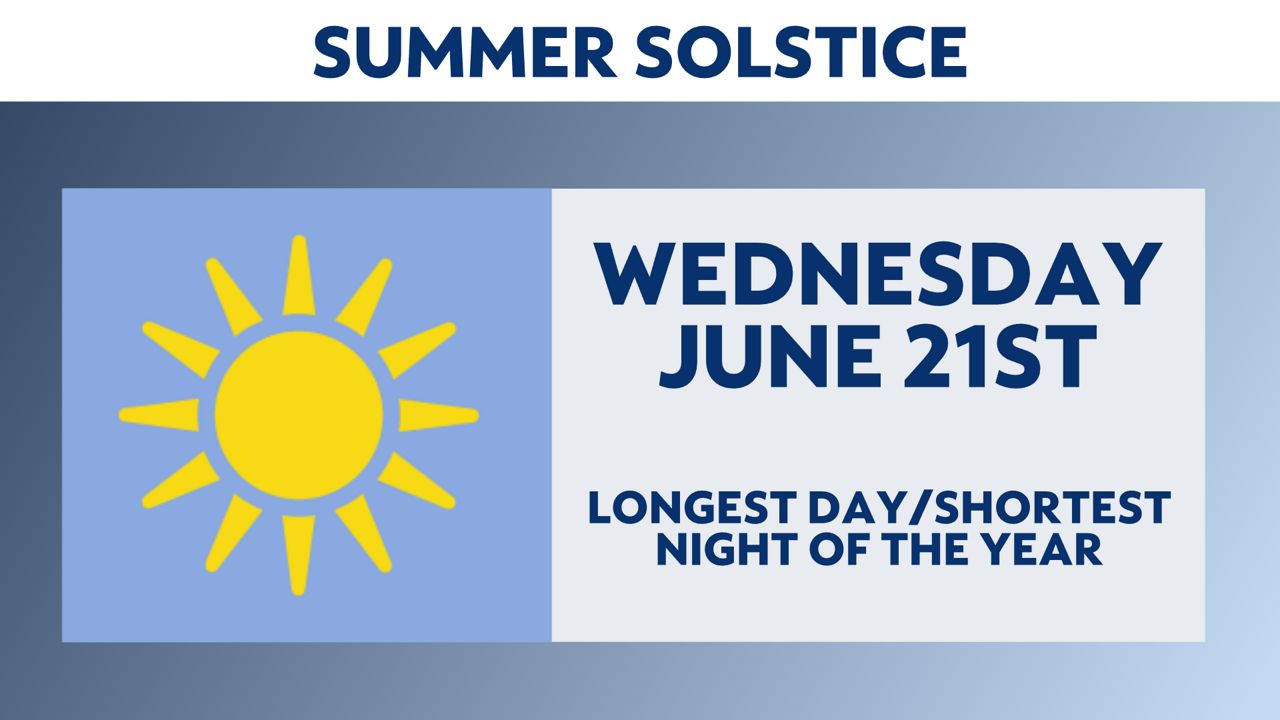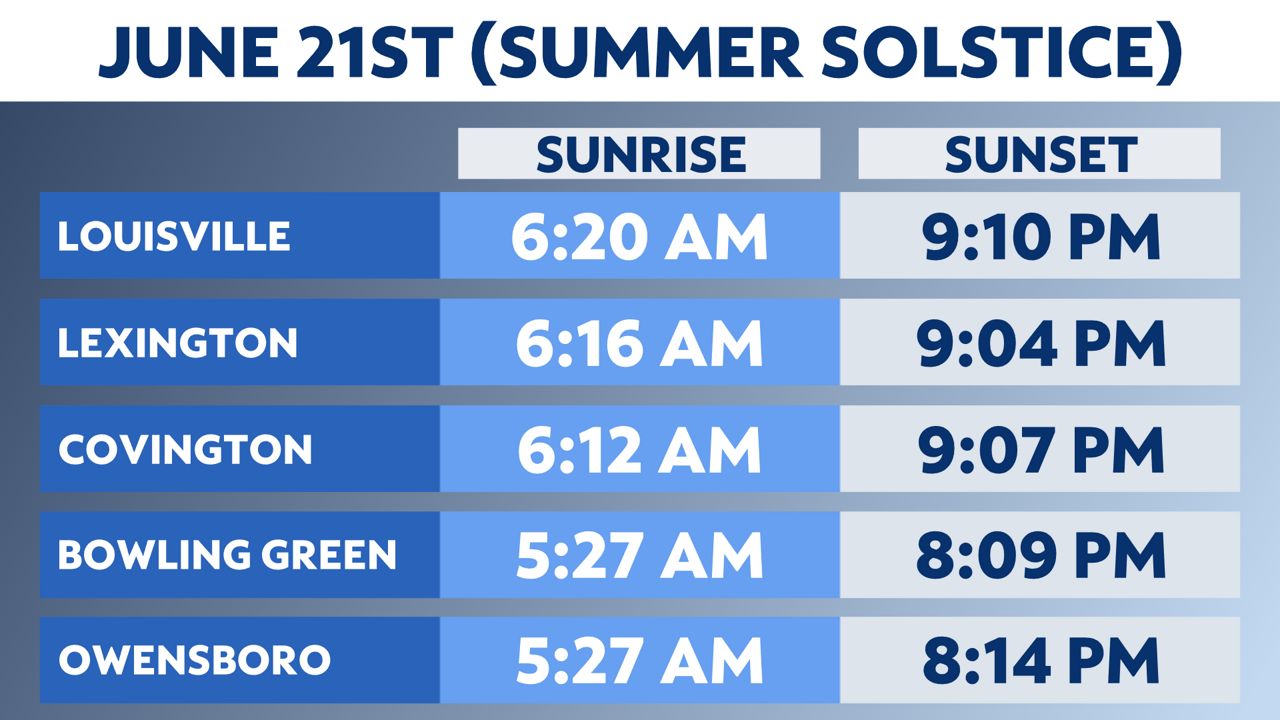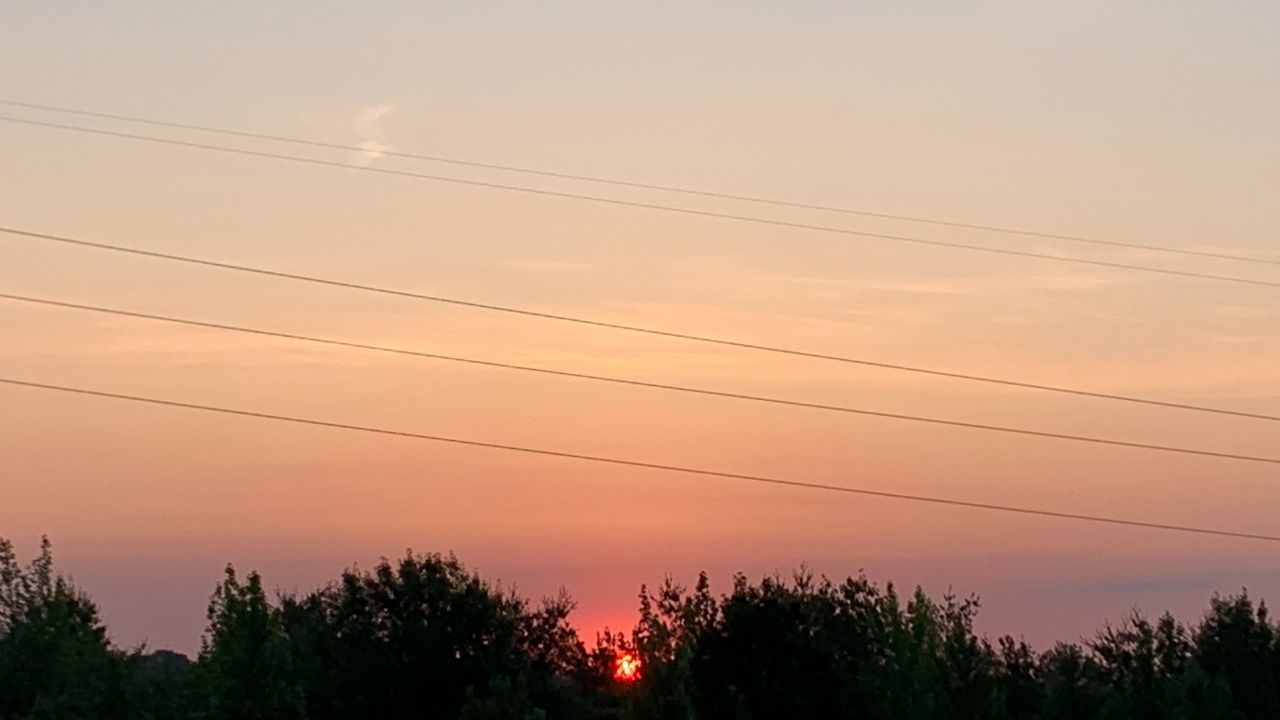As we approach the summer solstice, our days will continue to get longer and our nights shorter, giving us the most daylight we’ll see all year long.
You’ve likely noticed the days getting longer and the nights getting shorter over the past couple of months. This will continue until we hit the summer solstice on June 21.

On the solstice, the sun is at its northernmost point in the sky in the northern hemisphere compared to any other day of the year. That means we are seeing our longest day of the year and the shortest night as well. For that reason, we have very late sunsets and very early sunrises this time of the year.
Here is a look at the sunrise and sunset times across Kentucky on the solstice.

The sunsets are incredibly late for Louisville, Lexington and Covington, which are all in the eastern time zone. The sunset times aren’t as impressive in the central time zone (Bowling Green and Owensboro), but the pre-5:30 am sunrise times are impressive.
After the solstice, the days will get shorter and the nights longer. The change in the amount of daylight we see following the solstice is very subtle, but you will notice a difference by the first of August.

By Aug. 1, we will already have lost 40 to 43 minutes of daylight. The amount of daylight we lose every day will increase even more by late summer into early fall.
This serves as a friendly reminder to enjoy the daylight while it is at its peak, as we will lose a lot before we reach the end of summer.
Our team of meteorologists dives deep into the science of weather and breaks down timely weather data and information. To view more weather and climate stories, check out our weather blogs section.



